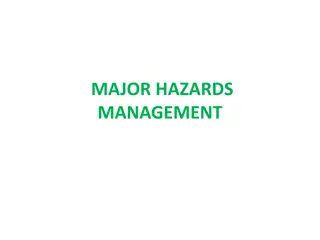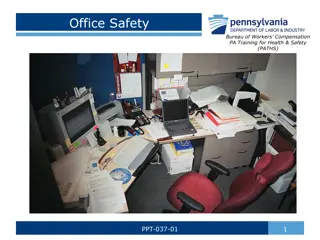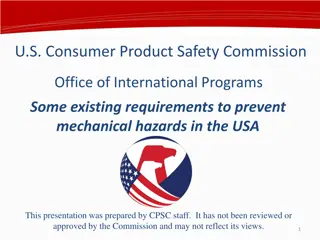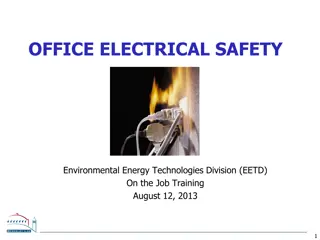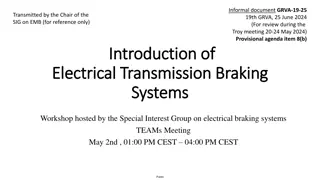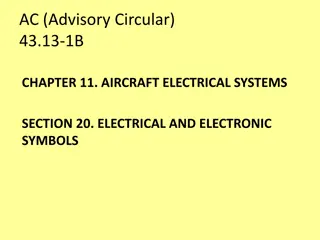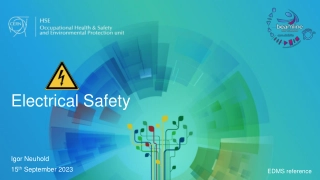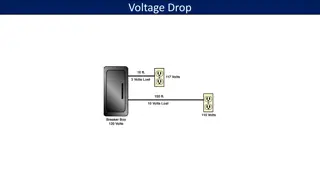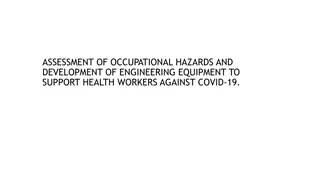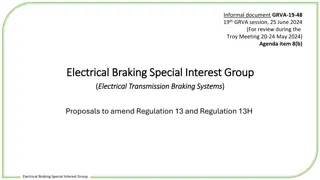Understanding Electrical Safety and Hazards
Electricity is a critical medium for energy transfer but can pose serious risks if not handled properly. Electrical faults can result in shock, burns, or fire, often caused by overcurrent issues. Knowledge of electrical characteristics, causes of electric shock, and protective measures like overcurrent devices is essential to prevent accidents and injuries.
Download Presentation

Please find below an Image/Link to download the presentation.
The content on the website is provided AS IS for your information and personal use only. It may not be sold, licensed, or shared on other websites without obtaining consent from the author. Download presentation by click this link. If you encounter any issues during the download, it is possible that the publisher has removed the file from their server.
E N D
Presentation Transcript
What is Electricity? A medium that provides a means for transferring energy from one place to another It is not expensive or difficult to control the risk of an electrical hazard, but ignoring them can cause serious consequences
Characteristics of Electricity Electricity has most of the characteristics of water, in that it flows and has a current that can be measured Electricity is measured in volts, amps and watts. Volts measure the pressure under which electricity flows. Amps measure the amount of electric current. Watts measure the amount of work done by a certain amount of current under a certain pressure
Electrical Faults can Result in Shock, Burns, or Fire Flow of Current Occurs when a person or conducting object bridges the gap between live conductors and the ground or between two live conductors. This action causes currents to flow.
Electrical Faults can Result in Shock, Burns, or Fire Static Electricity Occurs when static electrical charges accumulate from friction between dissimilar materials. Discharge of static electricity causes a mild shock.
Causes of Electric Shock. Current flow is the factor that causes injury in electric shock; body resistance will determine the path of flow. Once the skin is broken, a victim will have sharply reduced internal resistance to the flow of current
Electrocution or Shock Circuits of 110 volts or less can kill when the conditions are right. This is regular household currents. Any direct contact with 110 or 230 volt wiring has the potential for electrocution. Low-voltage currents frequently affect the heart, causing ventricular fibrillation. Electrical shock can cause complications such as vascular injury, LOC, damage to the respiratory center, infection, cardiac arrythmias or eye damage.
Overcurrent Devices. Protect circuit from excessive heating by opening the circuit automatically in event of excessive current flow from accidental ground, short circuit, or overload. Examples include fuses and circuit breakers
Ground Fault Circuit Interrupter.. GFCI is a fast-acting circuit breaker that is sensitive to very low levels of current leakage (5mA) to ground. When leakage becomes hazardous, it interrupts circuit. You will find GFCIs in what electricians call wet areas such as kitchens and bathrooms. GFCIs are normally used for outside wiring outlets.
Electrical Safety Policy.. An equipment management plan exists to identify, evaluate, inventory, and maintain medical equipment to reduce the physical and health risks associated with its usage. All biomedical and electrical equipment used in a hospital must be inspected and tested prior to use and labeled with a safety sticker. All electrical devices that a patient may bring into the hospital needs to be inspected and tested prior to use and labeled with a safety sticker prior to their use.
Electrical Safety Rules.. Visually inspect all equipment for damage prior to use Do not use extension cords for permanent wiring Unplug equipment by pulling on the plug and not the cord Damaged or defective biomedical/electrical equipment must be removed from service and reported to appropriate authority for repair
Electrical Safety Rules.. Keep fluids, chemicals, and heat away from equipment, cords, and cables. Maintain sufficient access around equipment and panels for operations/maintenance. Do not touch energized/conductive surfaces with one hand while touching the patient with the other. Know the function of each control prior to using equipment.
Emergency Power Hospitals are equipped with emergency generators which will start automatically if there is a loss of electrical power. Emergency generators are tested monthly. Red electrical outlets provide emergency power for critical patient care equipment.






